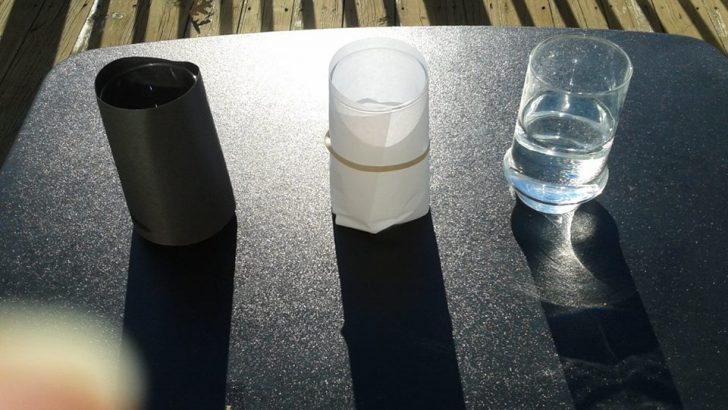Children’s Corner
We’re now approaching Easter and as the temperatures increase, the sun makes its presence felt and spring brings a plethora of growth in nature, what better time to investigate whether the colour of our clothes matters when it comes to retaining heat? When you’re out in the sun on a warm day does it pay to wear some light or dark-coloured clothes, and if so, why is that? Let’s experiment with light, colour, heat and some water to find out.
Apparatus
– Two identical drinking glasses or jars
– Water
– Thermometer
– 2 elastic bands or some cellotape
– White paper
– Black paper
Method
– Wrap the white paper around one of the glasses using an elastic band or cellotape to hold it on.
– Do the same with the black paper and the other glass.
– Fill the glasses with the exact same amount of water.
– Leave the glasses out in the sun for a couple of hours before returning to measure the temperature of the water in each.
What’s happening?
Dark surfaces such as the black paper absorb more light and heat than the lighter ones such as the white paper. After measuring the temperatures of the water, the glass with the black paper around it should be hotter than the other. Lighter surfaces reflect more light, that’s why people are advised to wear lighter coloured clothes in the summer, as it’s supposed to keep them cooler. Alternatively, on a day which is a bit cooler with some sun, black clothing should help you retain heat. We have established that darker colours attract more heat compared to lighter ones, but does it really have an effect on the person wearing the clothes?
According to recent scientific studies, this isn’t the complete story or maybe not even the correct one.
When the sun is shining on a hot summer’s day, a combination of bright light and radiant heat is emitted. This sunlight consists of a mixture of wavelengths that include infrared, visible, and ultraviolet light. Light coloured clothing reflects most of the visible wavelengths which, in turn, absorbs less heat. On the contrary, darker or black clothing absorbs more wavelengths, absorbing more heat, hence making the clothing warmer to wear. Although darker clothes are known to absorb more heat, this doesn’t necessarily mean that the heat will be transferred to the person wearing the clothes.
Investigations are ongoing, so watch this space!


 Chai Brady
Chai Brady
